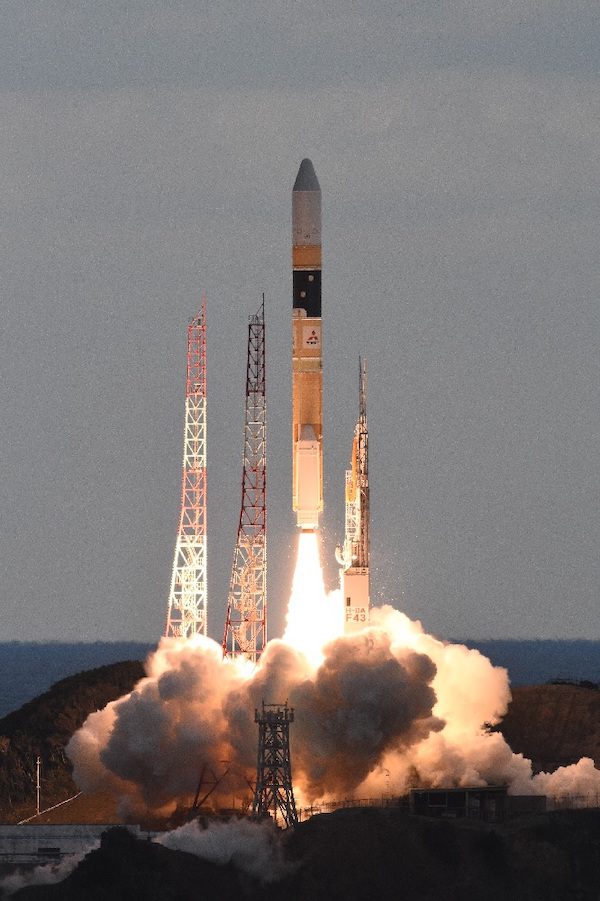Mitsubishi Heavy Industries (MHI) successfully launched an H-IIA (H-2A 202) rocket carrying the Japanese Data Relay Satellite (JDRS-1) to GEO from the Tanegashima Space Center, Kyushu, Japan, at 0725 GMT on 29 November. The satellite’s main role is to relay imagery from Japan’s various reconnaissance satellites. The imagery data will be beamed up to the JDRS-1 satellite located in GEO (Geostationary Earth Orbit) from the spy satellites in much lower Sun-synchronous low Earth orbits at circa 600 km to the relay satellite by a new laser system dubbed LUCAS (Laser Utilising Communications System).
While the H-2A is its current launch workhorse, Japan looks forward to the start of its new H-3 expendable launch vehicle. However, the first flight of this has been delayed until 2021 by fatigue fractures being found in LE-9 engine’s combustion chamber inner wall due to cooling issues and on the FTP blade turbopump due to a resonant vibration.
Mark Williamson contributed to this report








